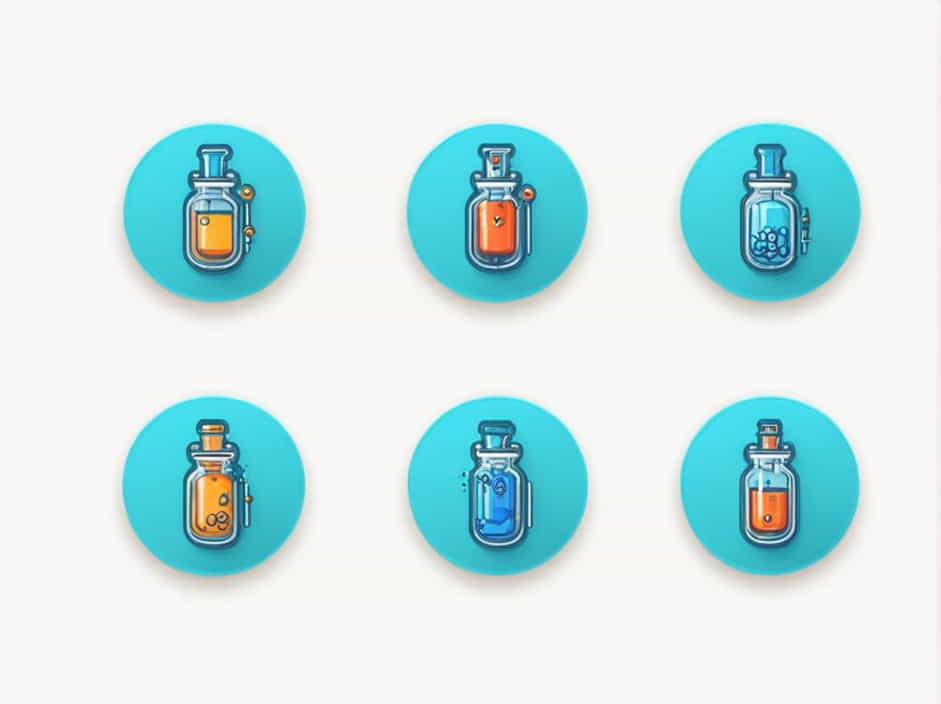Xenobiotics are foreign chemical substances that enter the body from external sources. These include drugs, pollutants, pesticides, food additives, and industrial chemicals. The body has a complex detoxification system that processes these substances to prevent toxicity and eliminate them safely.
The detoxification mechanism of xenobiotics mainly occurs in the liver, but other organs like the kidneys, lungs, and intestines also play a role. This process involves three major phases that convert toxic compounds into water-soluble forms for excretion.
Understanding this mechanism is essential in pharmacology, toxicology, and medicine, as it helps determine drug metabolism, toxicity levels, and potential health risks.
Phases of Xenobiotic Detoxification
The detoxification of xenobiotics occurs in three distinct phases:
-
Phase I: Functionalization Reactions (Modification)
-
Phase II: Conjugation Reactions (Neutralization)
-
Phase III: Excretion Processes (Elimination)
Each phase plays a crucial role in transforming xenobiotics into less harmful and more excretable forms.
Phase I: Functionalization Reactions
Phase I reactions introduce or expose functional groups in xenobiotic molecules, making them more reactive. This step involves oxidation, reduction, and hydrolysis, primarily facilitated by the cytochrome P450 enzyme system (CYP450) in the liver.
1. Oxidation
-
The most common reaction in xenobiotic metabolism.
-
Catalyzed by cytochrome P450 enzymes (CYP1, CYP2, CYP3 families).
-
Converts lipophilic (fat-soluble) xenobiotics into more polar metabolites.
-
Example: Conversion of benzene into phenol.
2. Reduction
-
Occurs in low oxygen environments.
-
Reduces xenobiotics using reductases.
-
Example: Conversion of chloral hydrate into trichloroethanol.
3. Hydrolysis
-
Breaks chemical bonds using water molecules.
-
Involves esterases and amidases.
-
Example: Hydrolysis of aspirin into salicylic acid.
Phase I reactions often produce highly reactive intermediates, which can be toxic if not processed further. This is why Phase II is crucial.
Phase II: Conjugation Reactions
In Phase II, reactive xenobiotics undergo conjugation, where they are linked to endogenous molecules like glutathione, glucuronic acid, or sulfate. This process makes the substances more water-soluble and easier to eliminate.
1. Glucuronidation
-
Catalyzed by UDP-glucuronosyltransferases (UGTs).
-
Attaches glucuronic acid to xenobiotics.
-
Example: Metabolism of morphine and paracetamol.
2. Sulfation
-
Adds a sulfate group to xenobiotics.
-
Catalyzed by sulfotransferases (SULTs).
-
Example: Sulfation of steroid hormones and acetaminophen.
3. Glutathione Conjugation
-
Uses glutathione (GSH) to neutralize toxic compounds.
-
Catalyzed by glutathione-S-transferases (GSTs).
-
Example: Detoxification of electrophilic metabolites from drugs and toxins.
4. Acetylation
-
Uses acetyl groups from acetyl-CoA.
-
Catalyzed by N-acetyltransferases (NATs).
-
Example: Acetylation of isoniazid (anti-tuberculosis drug).
Phase II reactions neutralize toxic intermediates from Phase I, ensuring they are safely processed for excretion.
Phase III: Excretion Processes
After detoxification, xenobiotics must be eliminated from the body through excretion pathways. This process mainly occurs via the:
-
Urinary System (Kidneys) – Water-soluble metabolites excreted in urine.
-
Biliary System (Liver) – Large molecules excreted in bile and feces.
-
Respiratory System (Lungs) – Volatile compounds exhaled.
-
Sweat and Saliva – Minor pathways for excretion.
The efficiency of excretion depends on molecular size, polarity, and solubility.
Factors Influencing Xenobiotic Detoxification
Several factors affect how effectively the body detoxifies xenobiotics:
1. Genetic Variability
-
Different individuals metabolize xenobiotics at different rates.
-
Genetic variations in cytochrome P450 enzymes (CYP variants) influence drug metabolism.
2. Age and Health Status
-
Neonates and elderly individuals have reduced metabolic enzyme activity.
-
Liver and kidney diseases impair detoxification.
3. Diet and Nutritional Status
-
Cruciferous vegetables (broccoli, cabbage) enhance Phase I and Phase II detoxification.
-
High-fat diets can slow down metabolism.
4. Drug Interactions
-
Some drugs inhibit or induce cytochrome P450 enzymes.
-
Example: Grapefruit juice inhibits CYP3A4, affecting drug breakdown.
5. Environmental Exposure
- Chronic exposure to pollutants, pesticides, and toxins can overload detoxification pathways.
Toxicity and Xenobiotic Overload
When detoxification systems are overwhelmed, toxic metabolites accumulate, leading to cell damage and diseases.
1. Drug Toxicity
-
Some drugs produce toxic metabolites if not properly detoxified.
-
Example: Paracetamol overdose leads to liver failure due to toxic NAPQI accumulation.
2. Cancer Risk
- Failure to detoxify carcinogens can lead to DNA mutations and tumor formation.
3. Oxidative Stress
- Reactive metabolites can cause oxidative stress, damaging cells and leading to neurodegenerative diseases.
Enhancing Xenobiotic Detoxification Naturally
Supporting the body’s detoxification pathways can help eliminate xenobiotics efficiently.
1. Increase Antioxidant Intake
-
Vitamin C, Vitamin E, and selenium protect against oxidative stress.
-
Found in fruits, nuts, and green vegetables.
2. Support Liver Health
-
Consume cruciferous vegetables, turmeric, and green tea to enhance liver detox enzymes.
-
Avoid excessive alcohol and processed foods.
3. Hydration and Kidney Function
- Drink plenty of water to support urinary excretion of toxins.
4. Exercise and Sweating
- Physical activity enhances blood circulation and toxin removal through sweat.
The mechanism of detoxification of xenobiotics is a vital biological process that protects the body from harmful foreign substances. This process occurs in three phases:
-
Phase I (Modification) – Converts xenobiotics into reactive intermediates.
-
Phase II (Conjugation) – Neutralizes toxic compounds.
-
Phase III (Excretion) – Eliminates metabolites via urine, bile, or breath.
Factors like genetics, diet, and environmental exposure influence detoxification efficiency. Supporting the body’s natural detox system through a healthy diet, hydration, and lifestyle choices can enhance xenobiotic metabolism and reduce toxicity risks.
Understanding xenobiotic detoxification is crucial for drug safety, disease prevention, and toxicology research, ensuring better health and longevity.
